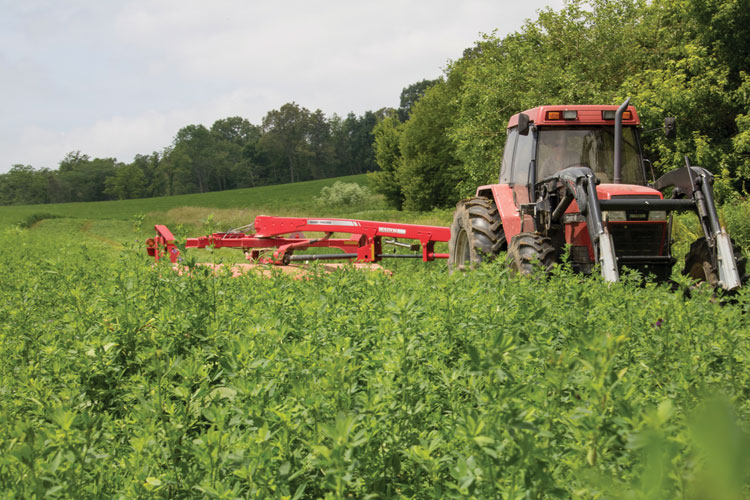
NOW that hay season has wrapped up for a majority of the country, it is the time to take a look back at the past year’s production and evaluate what was done well and identify those areas where improvement is needed.
Sometimes, it is difficult to look at our own operation with an unbiased viewpoint, but it needs to be done.
Making hay often starts with mowing, and this is an area where efficiencies can often be gained. After all, who doesn’t want to spend less time on their mower?
I’m not necessarily saying that a mower needs to be larger to be more efficient, but efficiencies can be gained with different types of mowers. For years, we basically only had two options when it came to mowers — the three-point hitch mower and side pull-type mower.
Yes, we have had swathers around for a long time as well, but for this article, I would like to limit the discussion to pull-type mowers and break down the hitches available for these units.
Improved with years
The most popular pull-type set up is still the right-side pull-type mower, but with each new year, we have been moving more and more customers into center pivoting pull-type mowers.
The right-side pull mowers have come a long way from the rope latch that you used to have to pull to move the mower from transport to field position. I’m sure some people driving by hayfields in the 1980s wondered why the farmer was driving around in tight circles in a newly mown field. Of course, we were just trying to get the mower to fold back into transport position! Now, you can simply use a hydraulic remote.
The newer mowers also now come with swivel gearboxes on the hitch, so the power takeoff (PTO) is never in a bind. This is unlike the mowers with a curved hitch from the early 2000s where you could barely turn to the left when in transport. All in all, side-pull mowers are reliable and tend to be more cost effective when compared to the center-pivot units, but you spend a lot more time turning and must go back and cut your corners if you skip them on the first trip around.
A change with wider widths
Center-pivot mowers came about due to the offset needed for 13- and 16-foot cutting widths. With the wider width, the mowed forage needs to be outside the track width of the tractor. With the swivel gearboxes, it just seemed natural to mow hay the same way we row crop, which is in long, straight rows. This is how you become more efficient — the longer and straighter the rows are, the more efficient you become in the overall haying process. These rows also lead to a more consistent hay dry-down process since you start fluffing, raking, and baling all on the same side of the field and continue across the entire field.
Center-pivot mowers really cut down on the amount of time spent turning around compared to the side-pull mowers. This is also amplified because the remaining operations will have less time turning around. The center-pivot mowers offer road transport benefits as well.
You don’t have to purchase a wider mower to be more efficient. A center-pivot 10-foot mower can be used to cut almost two more acres per hour compared to a 10-foot side-pull type just because less time is spent turning. Plus, you achieve efficiency throughout the rest of the haying process.
The primary downside to center-pivot mowers is simply the cost. The tongues are longer, and there’s a larger swing cylinder, two swivel gearboxes, and heavier frames.
Both types of hitches work great and neither constitutes a wrong choice, but with the cost of fuel, fertilizer, and deprecation on equipment, it never hurts to look for efficiencies. The center-pivot mower deserves consideration, especially if you’re looking to upgrade or trade. Less time mowing translates to more time doing something else, fewer hours on the tractor, or maybe just spending more time with the family. So, if a new mower is in your farm’s future, give the center-pivot models a look. I know that once you try one, you will likely not go back to a side-pull mower.
Have a great rest of the year.
This article appeared in the November 2023 issue of Hay & Forage Grower on page 30.
Not a subscriber? Click to get the print magazine.

